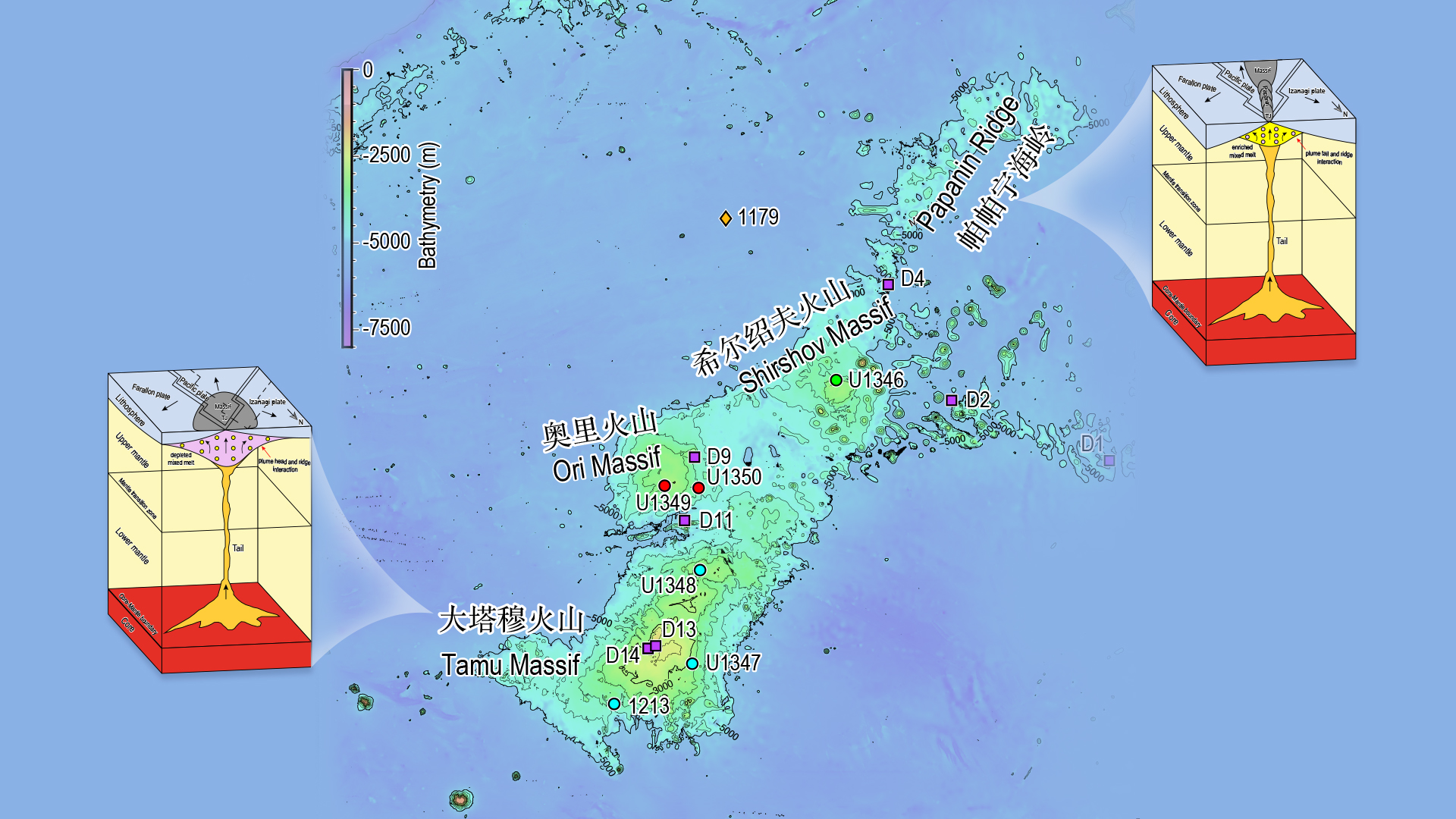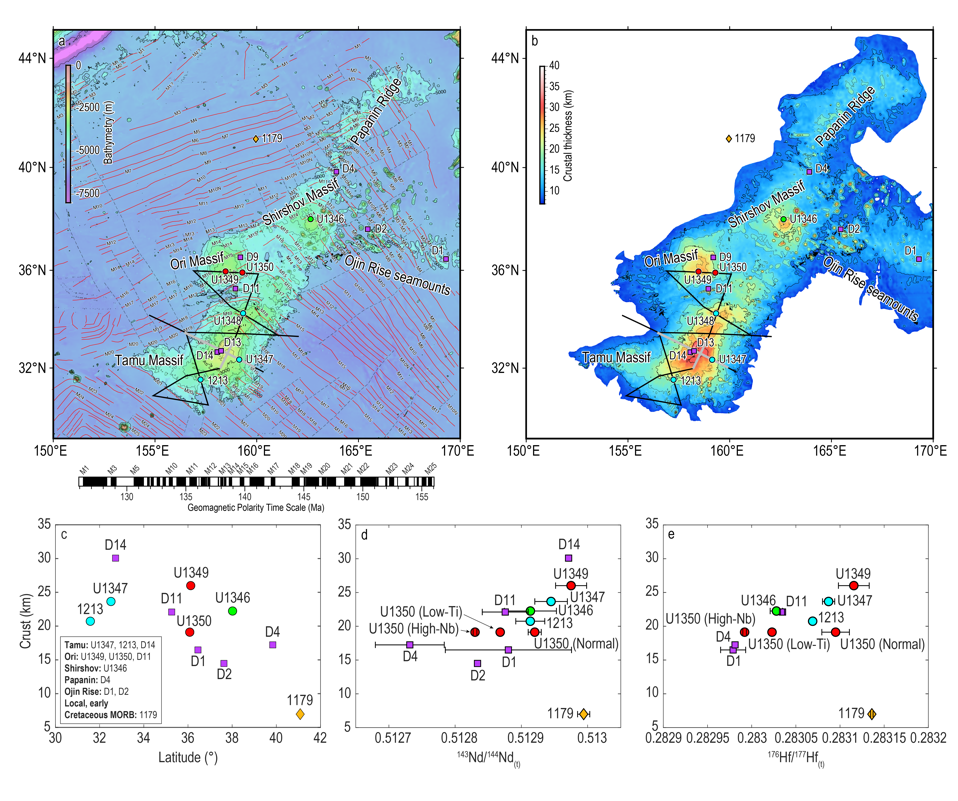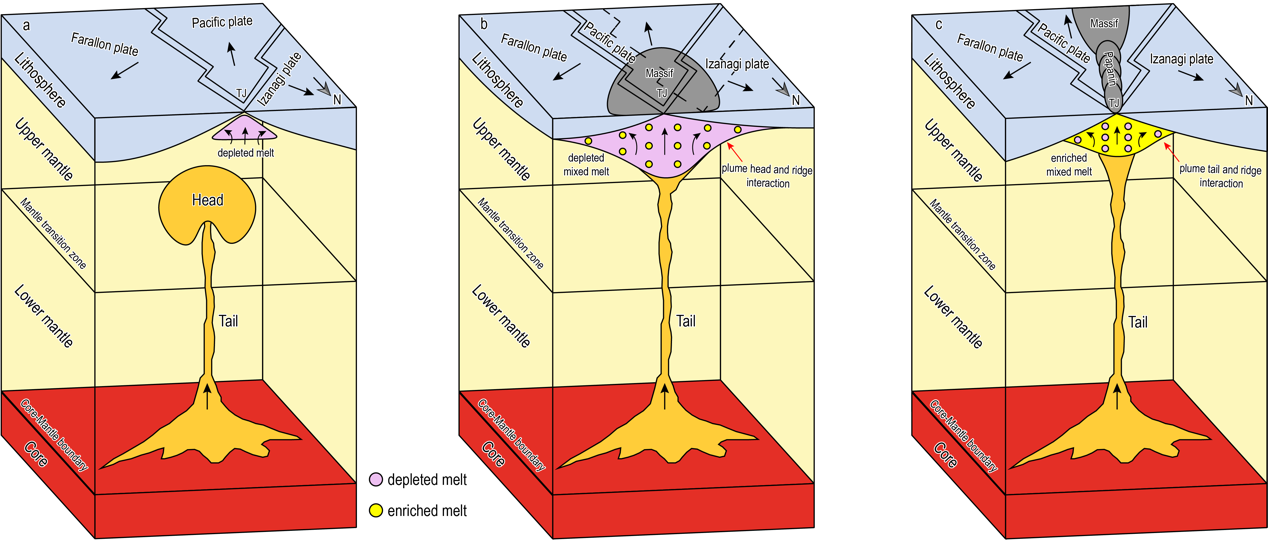Oceanic plateaus are extensive topographic uplift areas on the seafloor and formed by large-scale magmatism, which significantly affects climate change and mass extinction in Earth’s history. However, the origin of oceanic plateaus is controversial. The plume model suggests large oceanic edifices are formed by hot, buoyant plume-head eruptions from the deep mantle. The plate model argues that oceanic plateaus are formed by decompression melting of extremely fertile upper mantle induced by plate separation, and no obvious mantle temperature anomaly is required.

The research team led by Chair Professor Jian Lin from the Department of Ocean Science and Engineering at the Southern University of Science and Technology (SUSTech), in collaboration with scientists from both China and abroad, has recently made a significant breakthrough in the study of the formation mechanism of the Shatsky Rise, the third largest oceanic plateau in the world. They found that the interaction between mantle plumes and mid-ocean ridges is essential to its formation.
Their research findings, entitled “Magmatism of Shatsky Rise controlled by plume–ridge interaction”, have been published in the prestigious academic journal Nature Geoscience along with a research briefing summarizing the results.
The Shatsky Rise in the western Pacific, located at the triple junction of mid-ocean ridges, is one of the ideal places to study the origin of oceanic plateaus (Figure 1). Through analyzing multidisciplinary observations, researchers established thermodynamic models to estimate mantle conditions that could give rise to Shatsky Rise magmatism. The results indicate that only the interaction between mantle plumes and mid-ocean ridges could well explain the tectonic and magmatic characteristics of the Shatsky Rise.

Figure 1. Geophysical and geochemical observations along the Shatsky Rise in the western Pacific
The research team proposed a two-stage evolution model of plume-ridge interactions (Figure 2). In the first stage, the plume head vigorously interacts with the ambient mantle, resulting in extensive magmatism at the mid-ocean ridge. The resultant lava composition is similar to normal mid-ocean ridge basalts, as observed at the Tamu Massif (Figure 2b). In the second stage, the interaction between the plume tail and the ambient mantle weakens. The mid-ocean ridge can still form thicker oceanic crust, but the lava composition becomes more enriched, as observed at the Papanin Ridge (Figure 2c). Similar phenomena have also been found at other hotspots, such as Iceland, the Azores, and the Galápagos.

Figure 2. Spatiotemporal evolution model of plume–ridge interactions
These research findings are important for uncovering the origin of global oceanic plateaus and understanding the spatiotemporal evolution of mantle plumes.
Associate Scientist Xubo Zhang from the South China Sea Institute of Oceanology of the Chinese Academy of Sciences (SCSIO, CAS) is the first author of this paper. Chair Professor Jian Lin from SUSTech and Senior Scientist Jinchang Zhang from SCSIO, CAS, are the co-corresponding authors.
This research was supported by the National Natural Science Foundation of China (NSFC), Guangdong Provincial Natural Science Foundation, and the Chinese Academy of Sciences.
Related links:
Paper link: https://www.nature.com/articles/s41561-023-01286-0
Research briefing link: https://www.nature.com/articles/s41561-023-01289-x
To read all stories about SUSTech science, subscribe to the monthly SUSTech Newsletter.
Proofread ByAdrian Cremin, Yingying XIA
Photo By